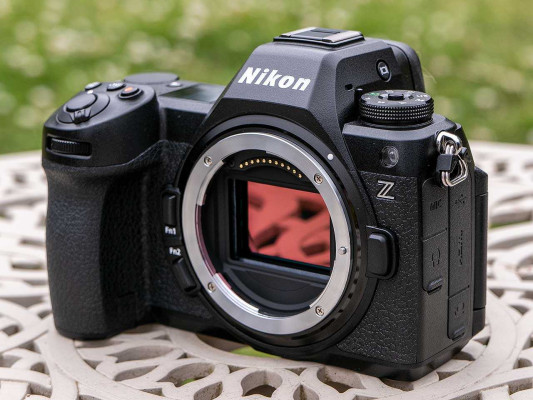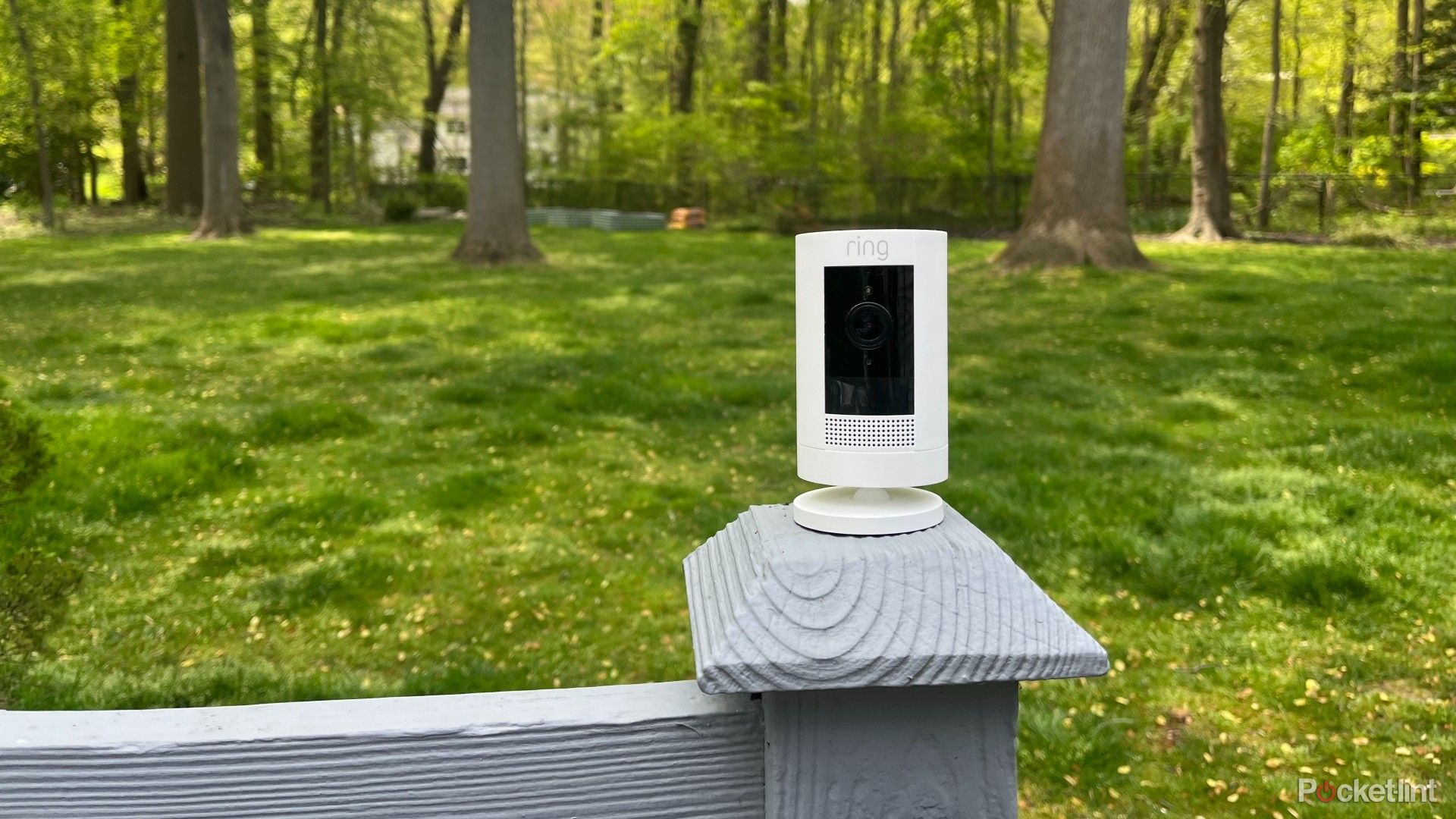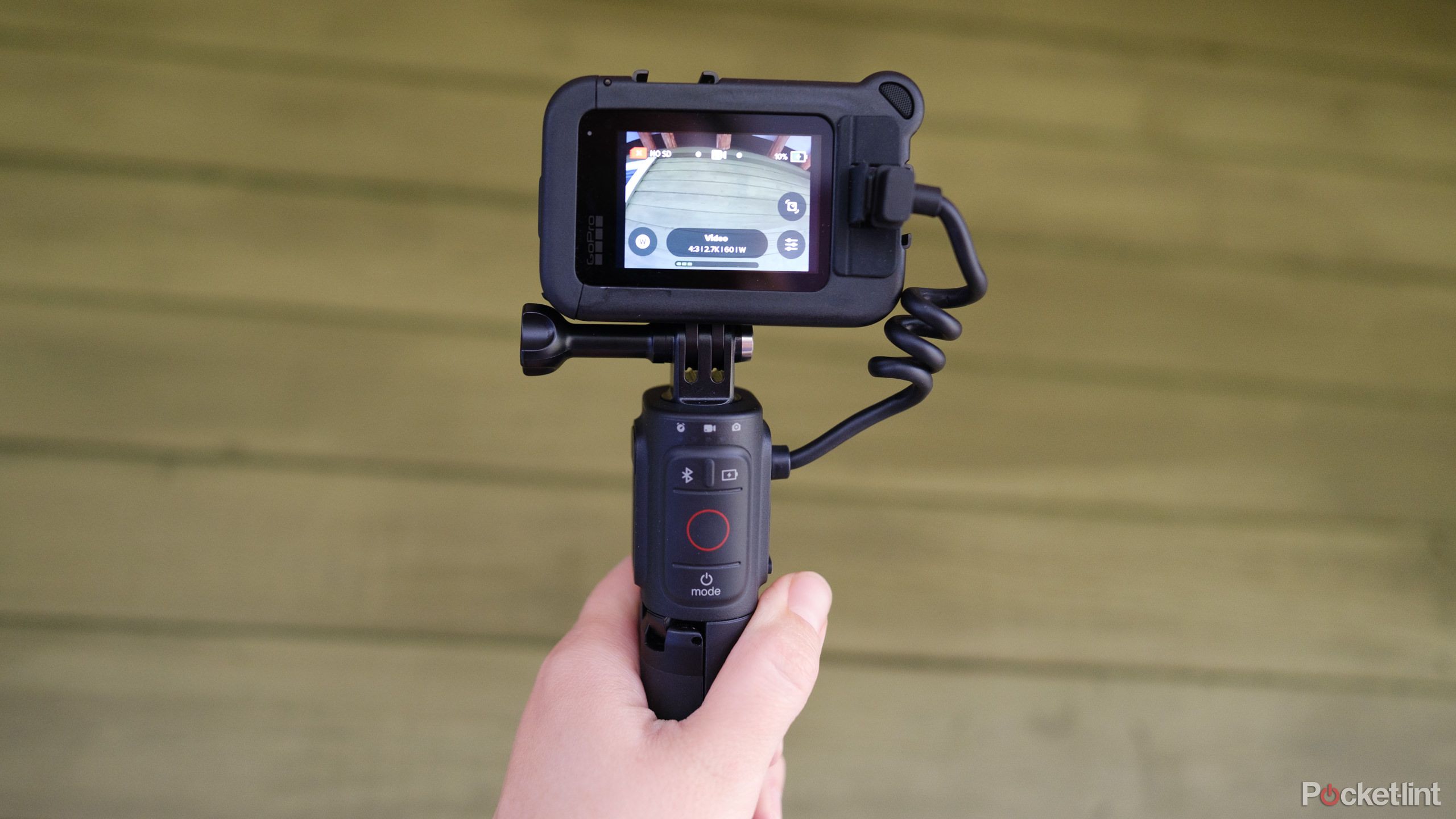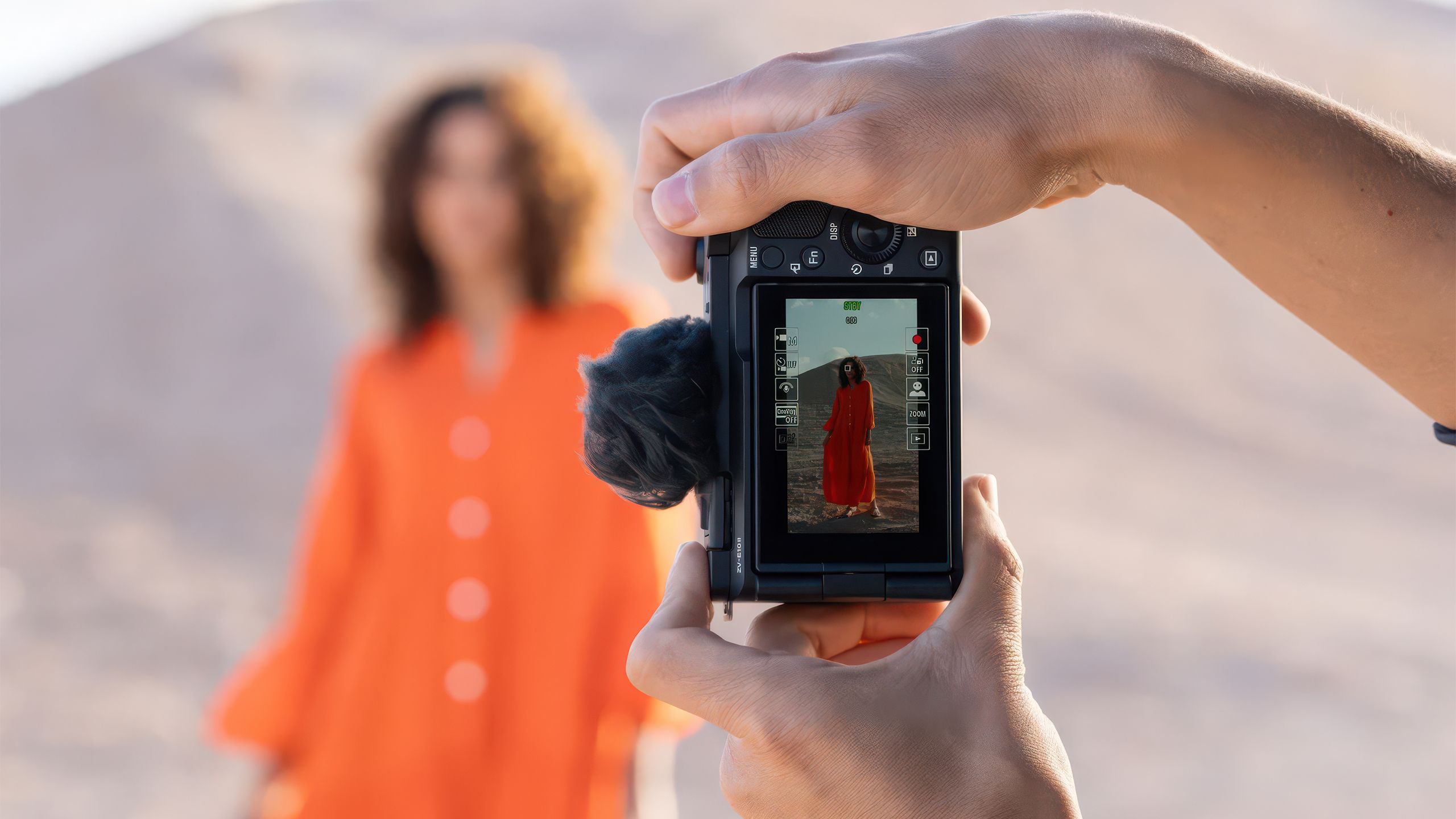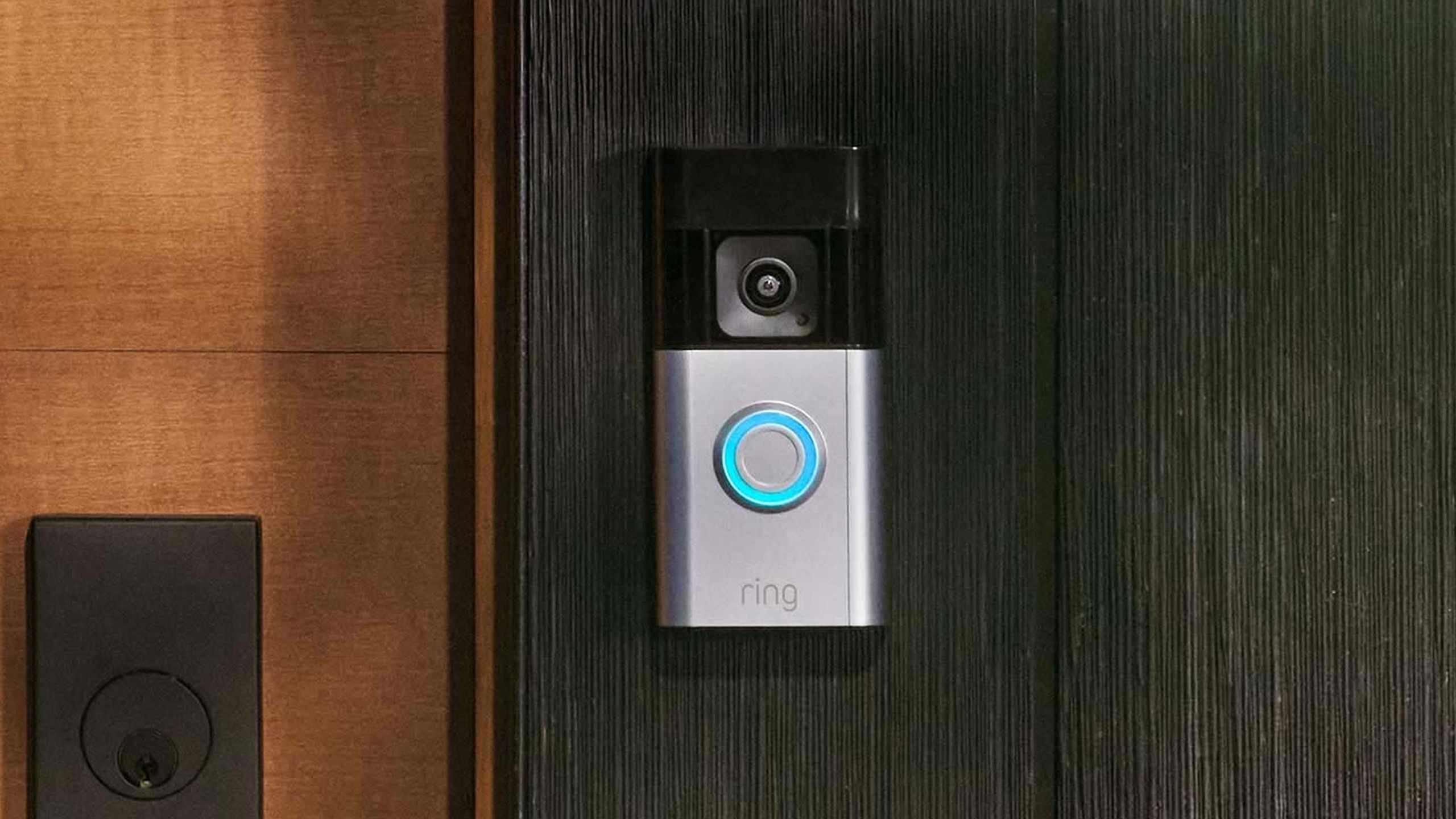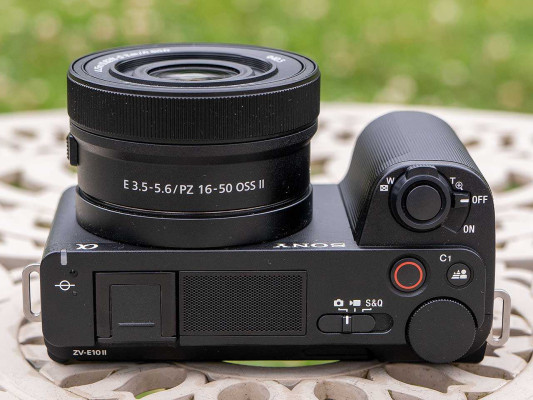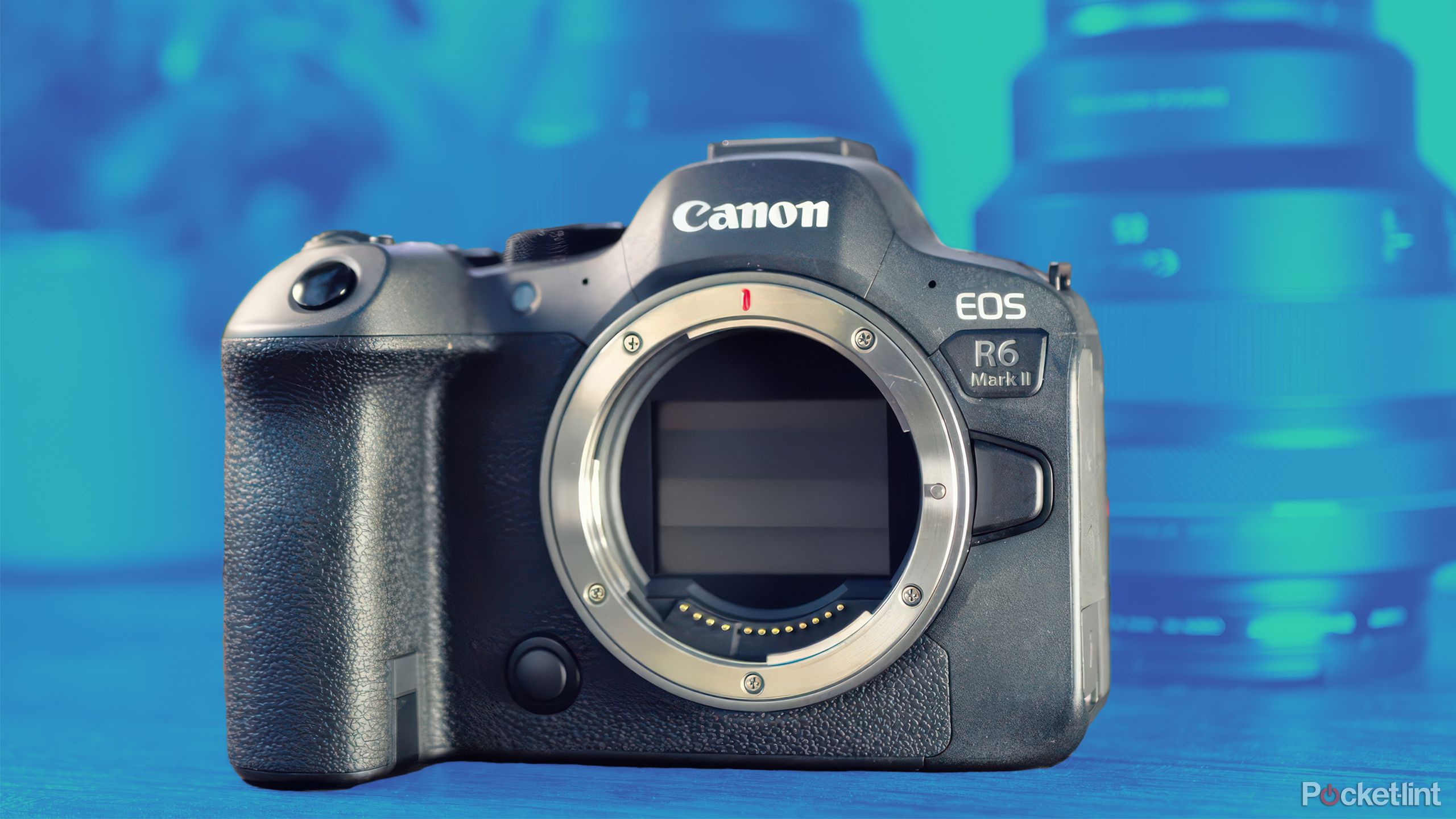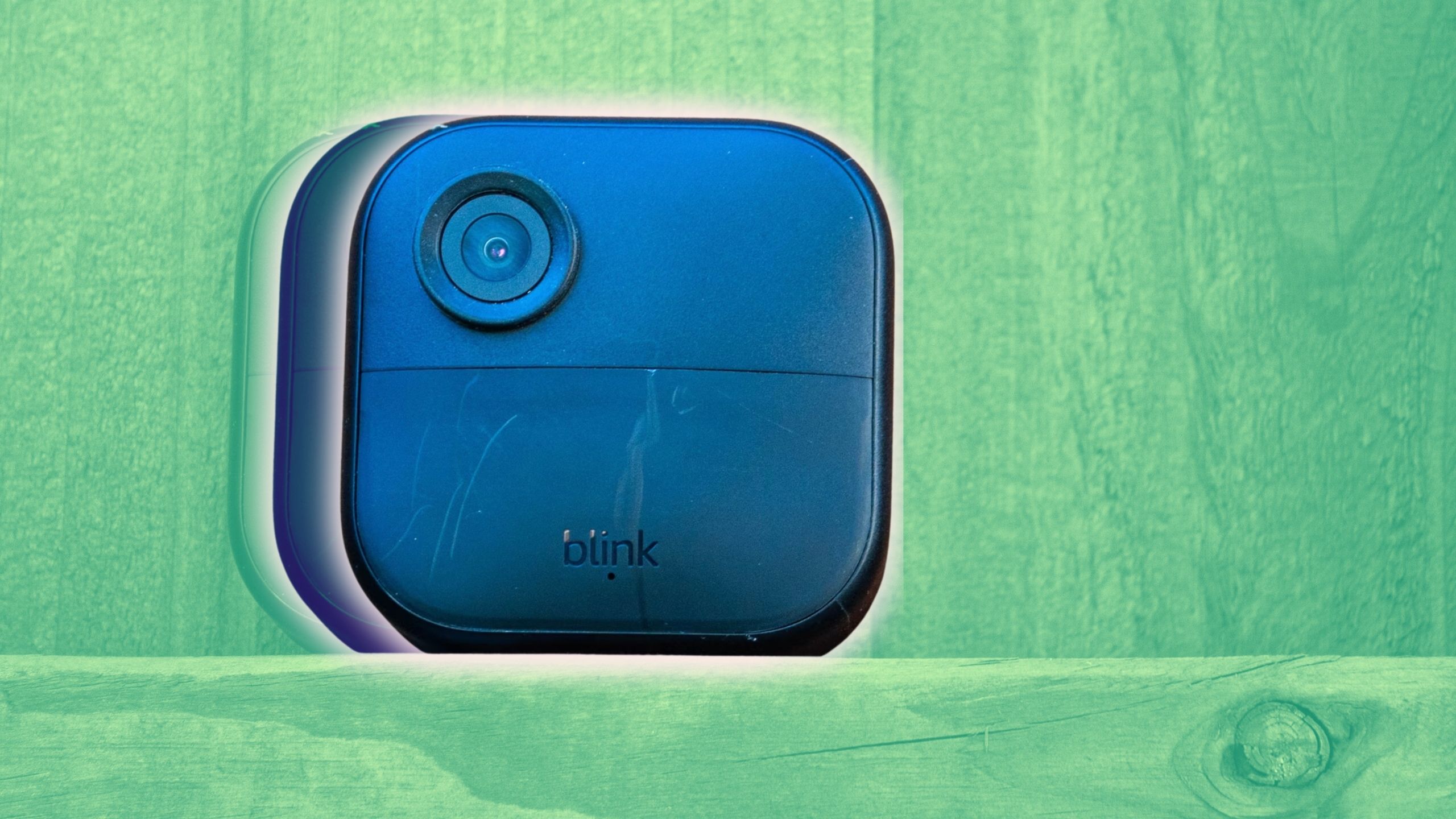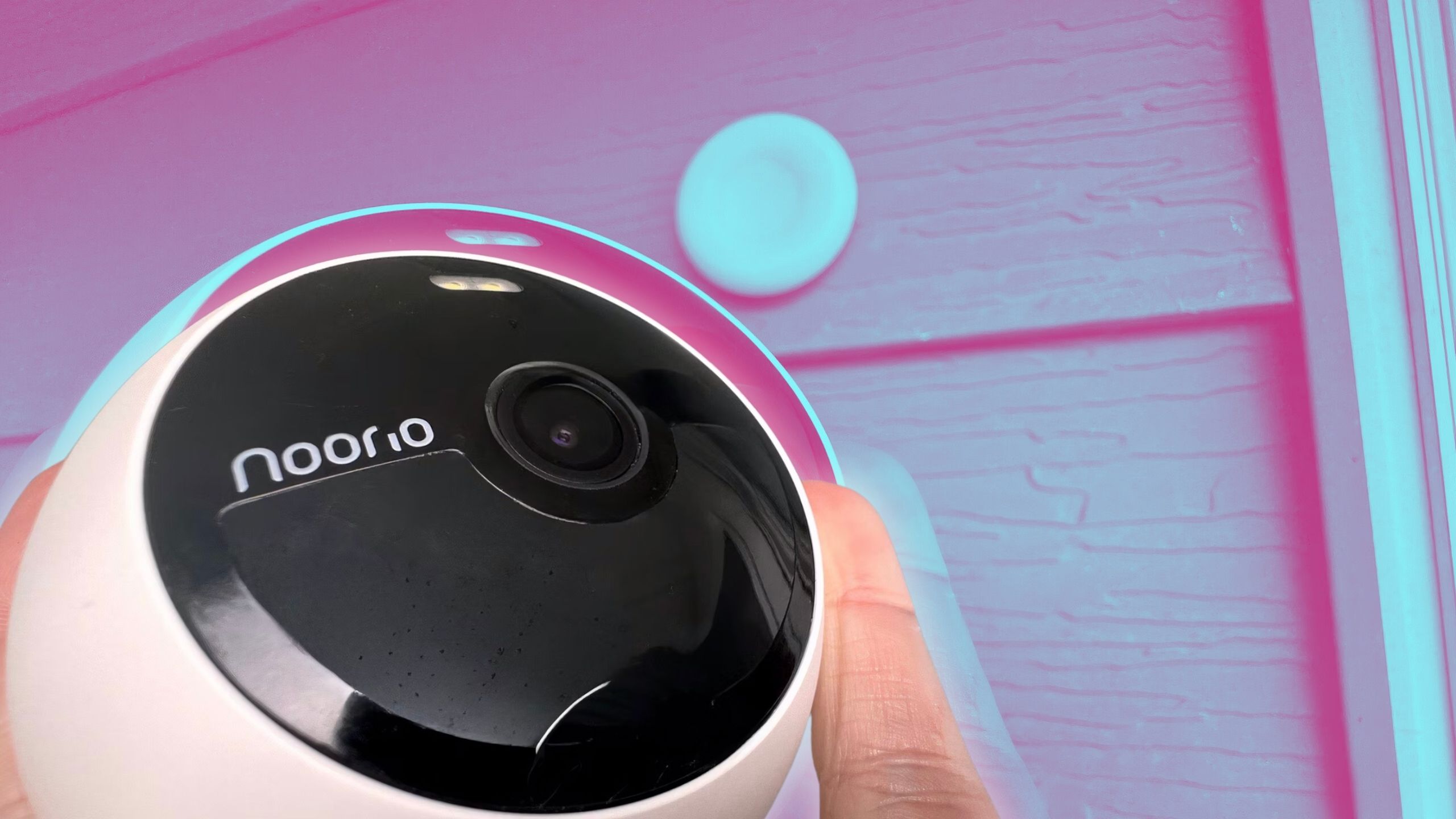Reviews

Canon EOS R5 Mark II preview
DPReview Latest |
Canon's EOS R5 II is the company's latest high-end, full-frame mirrorless camera, which now gains a Stacked CMOS sensor and many of the autofocus features of the company's new flagship R1 model.
Key specifications:
- 45MP Stacked CMOS sensor
- Eye-controlled AF subject selection
- Up to 30fps continuous shooting with blackout free viewfinder
- In-body stabilization rated at up to 8.5EV correction, coordinated with lens
- Pre-burst capture (JPEG)
- 8K Raw video capture up to 60p
- Canon C-Log2 profile
- Waveforms and false color display
- AF trained by machine learning for specific sports
- AI-enhanced post-shot noise reduction or upscaling
- 1x CFexpress Type B, 1x UHS-II SD
The Canon EOS R5 II will be available from August at a recommended sales price of $4299, a $400 increase over the original model (though less expensive in real terms if you account for inflation). A kit with the RF 24-105mm F4 L IS USM will be available for $5399.
There will also be a choice of three accessory grips, covered later in the article.
Index:
- What's new
- What's new for video
- How it compares
- Body & handling
- Initial impressions
- Sample gallery
- Video recording limits
- Specifications
- Press Release
What's new
 |
The biggest change in the EOS R5 II is the move to a Stacked CMOS sensor. As we've seen before, this allows the camera to read out its sensor much, much faster than conventional BSI or FSI chips. This speed allows the camera to capture 8K video at up to 60p and bursts of stills at up to 30fps.
If 30fps is too much for the shooting you do, the camera can be customized to shoot at 20, 15, 10 or 5fps instead. We found the readout rate in stills mode to be 6.3ms (∼1/160 sec) and that it appears to read out in 16 line chunks. This is a fair bit slower than the likes of the Z8 (∼1/270).
The EOS R5 II's sensor uses Canon's Dual Pixel AF design, with two photodiodes for each pixel location meaning almost the entire sensor can be used for phase-detection autofocus. But it does not have the cross-type arrangement used in the EOS R1 and, unlike the R5 Mark 1, it doesn't let you save Dual Pixel Raw files to make both photodiodes' data available.
Eye-control AF
The EOS R5 II gets the same updated version of Eye-control AF that appears in the R1. Like the first modern version in the EOS R3, this lets you select a subject to focus on by looking in its direction: as soon as you half-press the shutter button or hit AF-On to initiate focusing, the camera will pick the subject nearest to where it thinks you're looking.
The latest version has sensors with a wider field of view, to get a better view of the eye as a whole, and revised algorithms that should work better when the eye is further from the viewfinder. This should be particularly useful for people wearing glasses, and is supported with an eyeglasses detection mode, to avoid it getting confused by the additional lens and distance between the sensors and the photographer's eye.
'Digic Accelerator' co-processor
The EOS R5 II has the same 'Digic Accelerator' co-processor used in the R1. The way Canon talks about it is directly comparable to the way Sony describes its 'AI processing unit': a dedicated processor focused on crunching its way through the complex algorithms generated by AI mechanisms, which means the main processor can stay focused on things like distance measurement and communicating with the lens, rather than trying to do everything at once.
Canon says this processor helps run more complex exposure and white balance algorithms, too, boosting the camera's fundamental functions, as well as powering some of its novel features.
 |
 |
|
Our of camera JPEG 1/125 sec | F2.8 | ISO 51200 |
JPEG reprocessed with "Neural Network" noise reduction 1/125 sec | F2.8 | ISO 51200 |
Pre-capture
As with the R1, the R5 II can be set to capture up to 1/2 a second of action before you fully depress the shutter, so long as you have the button half-pressed beforehand. It can also pre-capture of 3 or 5 seconds of video.
Action Priorty modes
One of the biggest features the R5 II gains from the R1 are its Action Priorty AF modes. These are based on machine learning trained on how different sports look: how active players' bodies are positioned and what the ball looks like at key moments. The camera is able to follow the ball and work out which player to prioritize.
At launch the EOS R5 II will have AF modes for Football (Soccer), Basketball and Volleyball. Canon did not say whether it plans to add other sports, via firmware, later, but implied it would be possible.
Pre-registered person priority
In addition to the generic subject types the camera has been trained to recognize, it's also possible to register up to ten sets of ten people in the camera's memory. If engaged, the camera will try to give priority to those individuals if it identifies them in a scene.
This could be used to ensure you get photos of specific players at a sporting event or, for instance, during wedding shoots, where you can set the camera to prioritize the betrothed, rather than risking the camera getting distracted by other members of the wedding party that happen to get closer to your AF point.
You can even create a priority rank of the people you've identified, so that the camera knows to focus on the bride ahead of the groom, ahead of the maid of honor, and so forth. Despite you only giving the camera a single image of each subject, it proved pretty good at recognizing the people we asked it to prioritize.
AI-derived noise reduction or upscaling
 |
 |
|
Original image 1/2000 sec | F2.8 | ISO 640 |
Up-scaled version 1/2000 sec | F2.8 | ISO 640 |
Like the R1, the R5 II gains two post-shot options to reprocess your files using the full power of its AI-derived algorithms. It's not got the power or battery life to apply these as you shoot, so you'll need to select which images to process, after the fact. Even with a dedicated 'accelerator' chip, both processes take several seconds to apply to each file.
The first option is to up-res the images to twice their original resolution (four times the pixel count). This uses machine learning to anticipate what might occur between the captured pixels, to boost the apparent resolution. Somewhat unexpectedly, this process is conducted on JPEG or HEIF images only, rather than the Raw data.
The other option is to apply complex "neural network" noise reduction to files. This again is based on machine learning and attempts to distinguish between noise and detail to give a clean but detailed image. The option can be applied to Raw files but Canon says that the JPEGs that are then created cannot then be up-sized.
Blur/Out-of-Focus detection
 |
The other post-capture cleverness the EOS R5 II acquires is its ability to check how in-focus the chosen subject is, for all the images you've shot. This feature needs to be activated before you start shooting.
A metadata tag identifying the most precisely focused images is added to the file and can be used to filter your images, either in playback mode on the camera or in Canon's Digital Photo Pro software, when you get back to your computer.
The R5 II may not be able to shoot quite as fast as the EOS R1, but any amount of 30fps shooting is likely to make you appreciate the ability to home in on the most focused shots.
Anti-flicker
As with the EOS R3, there are options both to sync the camera's shooting to match the brightest point in the brightness cycle of lights that flicker at 100 or 120Hz in response to 50 or 60Hz electricity, and there's also a High Frequency Anti-Flicker mode that assesses the flicker rate of fast-flickering light sources such as LEDs, and chooses a fractional shutter speed at a harmonic frequency, to minimize visible banding.
Using these modes reduces the camera's maximum shooting speed considerably, as it can only shoot at specific moments in the flicker cycle of the lighting. For 100/120Hz flicker, Canon quotes figures of 12-15fps in e-shutter mode, 8.6fps in electronic first curtain mode and 4.8fps when in mechanical mode.
The EOS R5 II still has a mechanical shutter when needed, though: allowing flash sync at higher speeds, for instance. This can be used with continuous shooting at up to 12 fps.
What's new for video
 |
| The EOS R5 II gains a full-sized HDMI socket, over which it can output a Raw video stream |
The Stacked sensor underpins many of the leaps forward in the EOS R5 II's video capabilities, but in addition to the newfound speed, Canon has worked to enhance the camera's usability as a video camera, borrowing features from its Cinema EOS line (at last).
So, in addition to the camera's 8K and internal Raw capabilities, the R5 II also becomes the first camera in the main EOS line to gain a waveforms, a false color display as well as zebras, to make it easier to optimize exposure. It also has a tally lamp, to the let person in front of the camera know when it's recording.
The camera can also capture high quality footage (8K Raw or 4K compressed) to its CFexpress card while recording lower resolution and more heavily subsampled and compressed footage to the SD card.
Raw video
The EOS R5 II can capture either 8K Raw footage at up to 60p or 'SRAW' 4K video at up to 60p. Both options use the 1.89:1 aspect ratio DCI format. Canon hasn't given detail of how the 4K Raw is generated (downscaling or sub-sampling). The camera uses Canon's compressed 'Raw Light' format for the 50 and 60p footage, to keep file sizes manageable.
Both DaVinci Resolve and Adobe's Premiere appear to support Canon's Raw and Raw Light formats natively, while Apple's Final Cut Pro or Avid Media Composer require the installation of a plugin from Canon.
| Resolution (Aspect ratio) |
Frame rates | Crop | |
|---|---|---|---|
| 8K Raw | 8192 x 4320 (1.89:1) |
|
1.0x (Full width) |
| 4K SRaw |
4096 x 2160 (1.89:1) |
|
1.0x (Full width) |
Raw video allows a slightly greater degree of lightness adjustment (often incorrectly described as "ISO" or "Exposure" adjustment), and white balance correction than compressed and gamma-encoded footage. It's not anything like as big a difference and Raw vs. JPEG in stills, though, as 10-bit Log files can fully encode the sensor output and are designed for tonal edits in a way that JPEGs aren't, and the Raw footage is typically 12-bit.
Raw shooting also give much more control over noise reduction and sharpening, which are typically applied to some degree in gamma-encoded files, giving more freedom but adding an extra step to the workflow.
Compressed video
 |
The R5 II's compressed video options are more extensive, giving the choice of 8K or 4K derived from 8K at up to 30p. Both of these options are available in the 1.89:1 DCI aspect ratio or in the 16:9 UHD shape, which crops the edges of the footage in a little.
The R5 II can also shoot sub-sampled DCI or UHD 4K at up to 120p, while maintaining the same angle-of-view. We measured the DCI 8K as having a rolling shutter figure of 12.6ms (∼1/80 sec), which suggests the main reason to shoot the less detailed sub-sampled footage will be to access those faster frame rates or to avoid any heat concerns, rather than because of any need to lower rolling shutter.
Beyond this there are DCI and UHD 4K options taken from an approximately APS-C part of the sensor. There are also options to capture 2048 x 1080 full-width or edge-cropped Full HD footage at up to 240p, with APS-C versions of each available at up to 120p.
The EOS R5 II gains the ability to capture C-Log2 footage, as well as C-Log3. C-Log3 is a more expansive version of the original C-Log profile, but C-Log2 is a curve designed to encode an even wider dynamic range.
| Resolution (Aspect ratio) |
Frame rates | Crops | |
|---|---|---|---|
| DCI 8K |
8192 x 4320 (1.89:1) |
|
1.0x (Full width) |
| UHD 8K | 7680 x 4320 (16:9) |
|
1.05x (Horizontally cropped) |
| DCI 4K Fine | 4096 x 2160 (1.89:1) |
|
1.0x (Full width) |
| DCI 4K |
|
1.0x (Subsampled) | |
|
1.0x (Subsampled) or 1.61x |
||
| UHD 4K Fine | 3840 x 2160 (16:9) |
|
1.05x (Horizontally cropped) |
| UHD 4K |
|
1.05x (Subsampled) | |
|
1.05x (Subsampled) or 1.70x |
The EOS R5 II is the first camera outside the Cinema EOS range to be able to capture C-Log2, which makes it much easier to use in a workflow alongside those cameras.
Also aiding cross-compatibility is the adoption of the XF-AVC S and XF-HEVC S formats, which are the same as used on Canon's Cinema EOS and pro camcorder lines. Both options allow 10-bit 4:2:2 capture, but with the H.264-based XF-AVC S format dropping to 8-bit if you select 4:2:0 chroma sub-sampling, whereas the H-265-based XF-HEVC S files give you a choice of 8 or 10-bit for 4:2:0 capture.
The camera continues to support Canon's existing 8-bit H.264 and 10-bit H.265 MP4 files for resolutions up to 4K, in line with those offered on the EOS R5. It also continues to be able to record HDR PQ footage for display on HDR displays. Interestingly, the HDR PQ option can be combined with the HDR video mode that simultaneously captures normally and unexposed footage to add additional highlights to the end result (at up to 8K/30 or 4K/60).
Dual Shooting
There's also an option to capture UHD 8K (7620 x 4230px) JPEGS to one card while the camera is capturing Full HD video at up to 30p on the other. This feature requires the more powerful LP-E6P battery and, naturally, means that your shutter speed choices will apply to both the video footage and still images, but the camera can grab stills at up to 7.5fps depending on whether you're capturing 30p or 25p video.
Choice of accessory grips
The EOS R5 II can be paired with the $560 BG-R20 battery grip that can also be used with the original R5, R6 and R6 II, but it can also be used with two additional accessory grips that are exclusively designed to work with it. The first is a BG-R20EP battery grip that includes an Ethernet port, giving 2.5 Base-T connections, costing $750.
 |
| The CF-R20RP accessory grip adds both a fan and an Ethernet port to the camera, but doesn't duplicate the controls. Image: Canon |
The third option is the CF-R20EP Ethernet and fan grip, priced at $600. Unlike the other two grips, this doesn't have duplicate controls for portrait shooting, it's just a fan designed to pull cool air through and lower the temperature of the camera when shooting video. This can extend the shooting duration for all but the most demanding video modes and helps maintain the shooting duration in warmer conditions. It also includes an Ethernet port for fast cabled network connection.
As with the original EOS R5, Canon has published details of how long it expects the R5 II to be able to continue recording video before it overheats. We've published these in full on a separate page so that videographers can check whether the camera meets their needs and whether they'll need the fan grip, but without having to add another large table to the middle of the review.
How it compares
The Canon EOS R5 II is explicitly both a successor to the EOS R5 but also the de facto continuation of the EOS 5D series, a series of cameras for enthusiast and pro photographers and video shooters. As ever, the most directly comparable competitor comes from Nikon, whose Z8 aims to do much the same thing, just as the D800 series of DSLRs did beforehand.
There are no other like-for-like competitors to these two cameras: Sony offers the a7R V for photographers wanting high-resolution stills, but with nothing like the speed or video capability of the Canon and Nikon cameras, or the a1, which offers both speed and some video capabilities but at a price that pushes it very heavily towards the Pro end of the audience. It's a pretty old camera at this point, so can be bought well below its list price, but don't let that hide the fact that its primary intent was to compete with the Z9 and R3/R1s of this world. We're including it here more for interest, than direct competition.
| Canon EOS R5 II | Nikon Z8 | Sony a1 | Canon EOS R5 | |
|---|---|---|---|---|
| MSRP at launch | $4299 | $3999 | $6500 | $3899 |
| Pixel count | 45MP | 45MP | 50MP | 45MP |
| Sensor type | Stacked CMOS (Dual Pixel) | Stacked CMOS | Stacked CMOS | FSI CMOS (Dual Pixel) |
| Shutter type | Mech / Electronic | Electronic only | Mech / Electronic | Mech / Electronic |
| Max frame rate | E: 30fps M: 12fps |
E: 20fps (30fps JPEG) | E: 30 fps M: 10 fps |
E: 20fps M: 12fps |
| Flash sync speed | M: 1/250* | E: 1/200 | M: 1/400* E: 1/200 |
M: 1/250* |
| Max video res / rate | 8K/60 | 8K/60 | 8K/30 | 8K/30 |
| Video formats |
Canon Raw |
N-Raw ProRes Raw ProRes 422 H.265 H.264 |
XAVC HS XAVC S XAVC S-I |
Canon Raw Canon Raw Light H.265 MP4 H.264 MP4 |
| Viewfinder | 5.76M dots 0.76x |
3.69M dots 0.8x |
9.44M dots 0.9x |
5.76M dots 0.76x |
| Rear LCD | 3.2" 2.1M dot Fully-articulated | 3.2" 2.1M dot Two way tilting | 3.0" 1.44M dot Tilting |
3.2" 2.1M dot Fully-articulated |
| Waveforms, Corrected Log preview, False color |
Yes/Yes/Yes | Yes/Yes/No | No/Yes/No | No/Yes/No |
| Stills battery life EVF / LCD |
340 / 630 | 330/340 | 430/530 | 220/320 |
| Video battery life (LCD) Cont. / Actual |
– / – | 85min / – | 150min / 95min | 120min / – |
| Dimensions | 138 x 98 x 88mm | 144 x 119 x 83mm | 129 x 97 x 70mm | 138 x 98 x 88mm |
| Weight | 670g | 910g | 737g | 738g |
The upgrades to the EOS R5 II bring the camera at least into line with those of the Nikon Z8, with faster Raw shooting, 8K/60 Raw for those that can handle the file size and adding the level of video support tools that was seeming somewhat lacking in the existing camera.
What this table can't really capture is the fine detail such as Registered Person Recognition mode and the activity-specific autofocus behavior algorithms. How well these work may, at least for the kinds of photographers who shoot the relevant types of subject, define the margin by which the EOS R5 II turns out to have overhauled the Nikon in the eternal game of leapfrog the two companies are locked in.
Body and handling
 |
| Other than the power switch moving, Canon hasn't changed much of the R5 II's control layout. Note the large rubber hood that protects the new multi-function hot shoe. |
The R5 II's body is extremely similar to that of its predecessor: similar enough that it's BG-R20 battery grip can be used with the existing model. The only major external change is that, like the EOS R6 II, the power On/Off switch on the top left hand corner is now a stills/video switch, and the power control is now around the rear command dial on the top plate.
This change will no doubt infuriate upgraders who've become used to the handling of the existing R5 but after a couple of days of accidentally flicking to photo mode, rather than finding the power switch, it soon enough becomes second-nature.
Canon's specs show the camera growing by a fraction of a mm in each dimension but all these changes are small enough that they round-down to the same figures as with the previous model.
This is no bad thing, as we really liked the way the original R5 handled: it's a pretty large camera but its grip is very well shaped and proportioned, and the controls were all well placed and comfortable to use for extended periods.
New menu section
The EOS R5 II bears witness to that rarest of things: a change to Canon's menu layout. In addition to the familiar menu sections, there's now an olive green tab containing all the control customization options from the menu, so they can all be easily located. This includes control customization for shooting and playback mode.
Viewfinder
 |
The EOS R5 II still uses a 5.76M dot OLED panel and still maintains the 0.76x magnification but the optics have been significantly redesigned to allow the implementation of Eye-control AF. This makes the viewfinder appear larger as you look at the camera but in practice it's the same size when you're using it.
What doesn't come across from the spec is that the new OLED panel can go much brighter than the one in the original R5 (though not as bright as the one in the R1). There is also 1mm increase in the eyepoint, though, which means you can see the entire viewfinder panel from a tiny bit further away from the finder.
The rear screen remains the same 3.2", 2.1M dot, fully articulated unit.
Flash hotshoe
The EOS R5 gains the multi-function hot shoe from the EOS R3. This has a row of contacts that can be used to feed a digital audio signal into the camera, allowing the use of the DM-E1D digital stereo mic, the contacts can also provide power to the ST-10 radio flash trigger or to provide a wired data connection to an Android smartphone using the AD-P1 adapter.
The shoe itself is sealed, but if you want to maintain a water-resistant seal with a weather-resistant flash, you'll need to use the AD-E1 adapter.
 |
As before, the EOS R5 II has one CFexpress Type B card slot and one UHS-II SD slot. This means you're always likely to have a card that'll work with the camera, but also means there's a longer list of video modes that can't be saved to the smaller, slower card.
Battery
 |
The EOS R5 II takes a new battery but, as is normal for Canon, it's also able to accept existing LP-E6, E6N or E6NH. The LP-E6P is a larger capacity version of the existing unit, maintaining the backwards compatibility Canon makes some effort to preserve.
The higher res, brighter viewfinder results in a CIPA rating of 340 shots per charge (up about 50% compared with the original R5), while the rating when using the LCD nearly doubles to 630. As always, we find the CIPA testing methodology is much more demanding that most people's real-world usage, and they become less and less meaningful the more burst shooting you do. These aren't bad numbers, all things considered.
Intial impressions.
By Richard Butler
The EOS R5 II is essentially a super-charged EOS R5 and, in that regard, is effectively the continuation of the EOS 5D series as Canon's premium enthusiast camera for both stills and video. Like Nikon's Z8 it brings Stacked CMOS sensor technology to give both its stills and video capabilities a further boost, further expanding the range of tasks to which it can be put.
With the added speed and an AF feature set borrowed directly from Canon's EOS R1 series, the R5 II promises to be a hugely capable action camera, which only helps expand the versatility of Canon's highest-res body. Just like Nikon's Z8, you now have a studio camera that can also be a landscape camera that can also be a wedding camera that can shoot faster and focus more reliably than the last generation of pro sports DSLRs. And buyers aren't being made to wait for R1 capabilities to trickle down the lineup: they're available on the day that the R1 is launched.
And if you don't shoot sports, it also gains the "AI" upsampling and noise-reduction options, to help get the most out of the camera.
And that's without even considering the video side of things. Specs are boosted, both in terms of allowing 8K capture at up to 60p, but also through the addition of the XF-AVC S and XF-HEVC S codecs used by its high-end cameras. These and the ability to shoot use the wider-DR C-Log2 curve means the EOS R5 II can more readily fit into a workflow alongside Cinema EOS cameras. But, even for the majority of people for whom the R5 II will be their sole camera, the provision of waveforms and false color displays should make the R5 II much easier to shoot with.
"Perhaps the most notable feature of the EOS R5 II will be the inclusion of Eye-control AF"
The option to add a cooling fan, extending the camera's recording endurance or improving its dependability in warmer temperatures may negate the need for Canon to introduce an R5C II alongside this model.
But who knows, perhaps the most notable feature of the EOS R5 II won't be the manifold but incremental improvements in shooting speed, AF performance or video options, but the inclusion of Eye-control AF.
We were impressed by Eye-control subject selection on the EOS R3 but had differing experiences of how consistent and reliable it could be. If the changes Canon has made truly address this inconsistency, then it could be the R5 II's decisive feature. The ability to focus on whatever you're looking towards when you choose to initiate focus is one of the few experiences in photography I can genuinely call intuitive (if anything it takes a while to stop over-thinking the function, and simply initiate focus when something interesting happens, because you're probably already looking at the subject in question).
In an era where current models are so capable (and the existing R5 is supremely capable), even appreciable improvements in performance and increases in spec aren't necessarily enough to make it worth the cost of upgrading, despite them adding up to a better camera, overall. With Eye-control AF, the EOS R5 II has an extra feature that could be significant, even for users who'll never shoot a moment of 8K Raw or use the football Activity AF option. We'll find out once we get to spend more time with the camera.
Sample gallery
Please do not reproduce any of these images on a website or any newsletter/magazine without prior permission (see our copyright page). We make the originals available for private users to download to their own machines for personal examination or printing (in conjunction with this review); we do so in good faith, so please don't abuse it.



